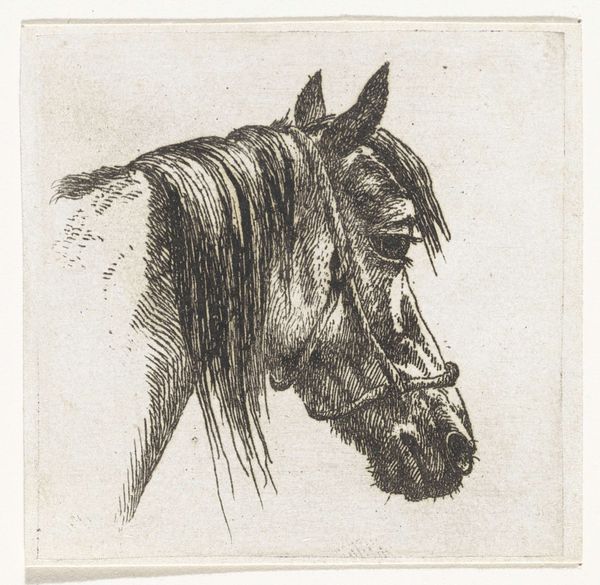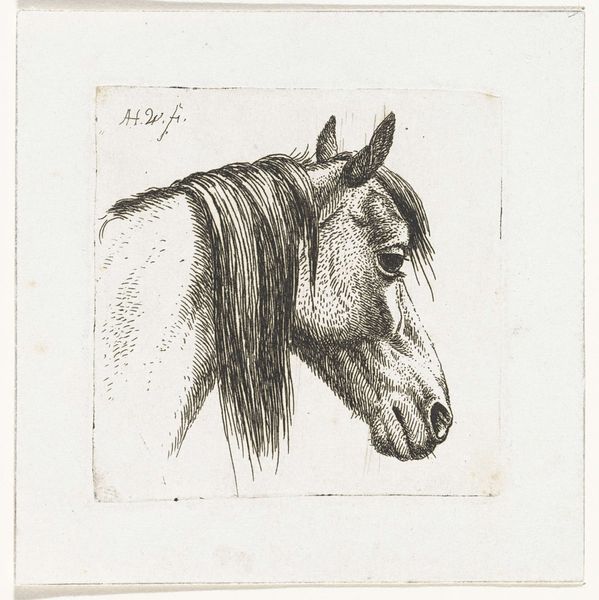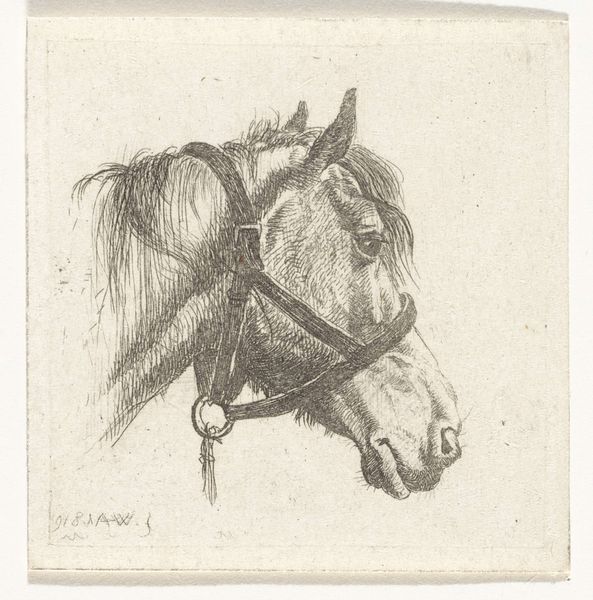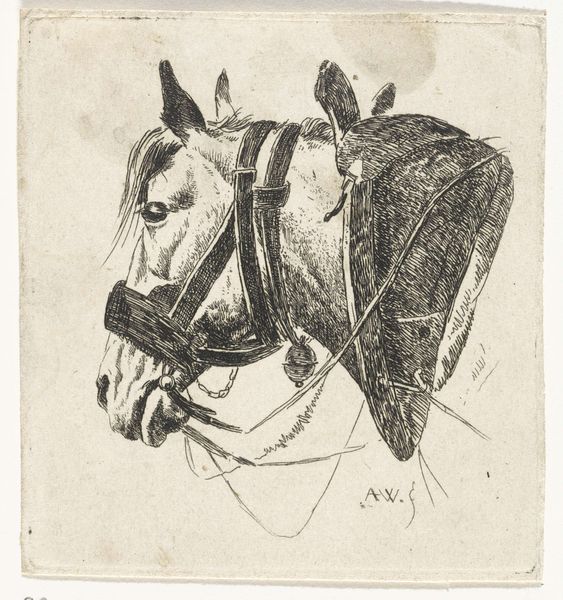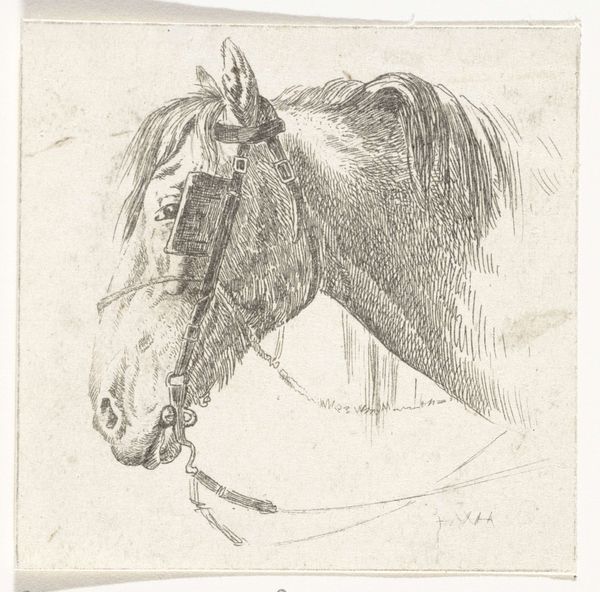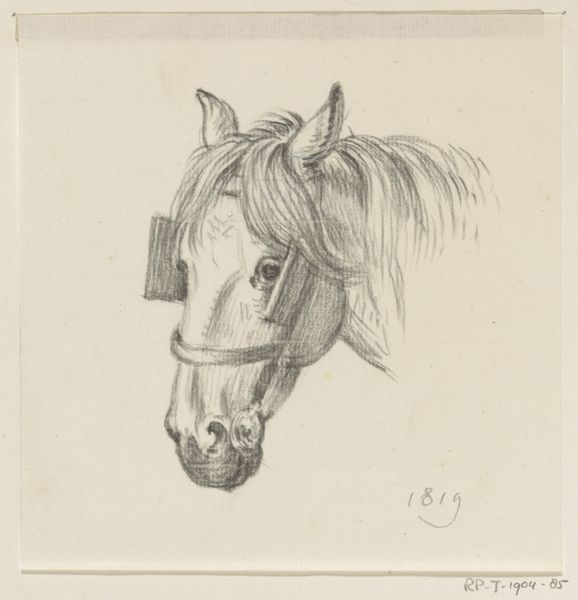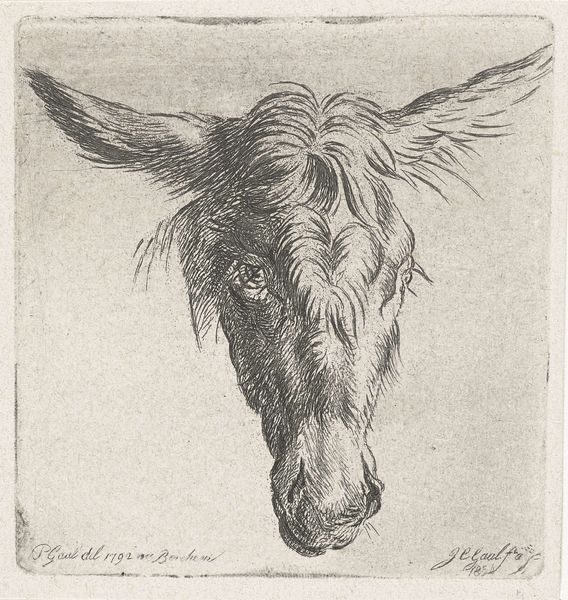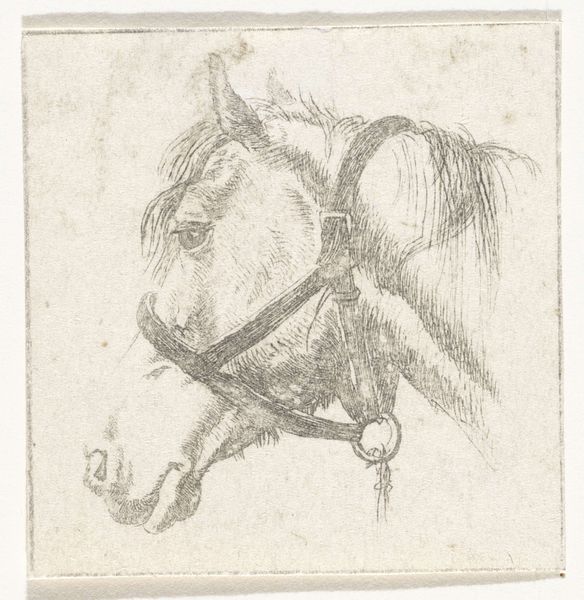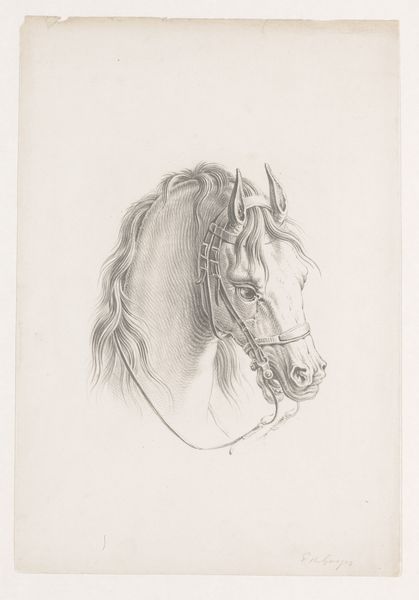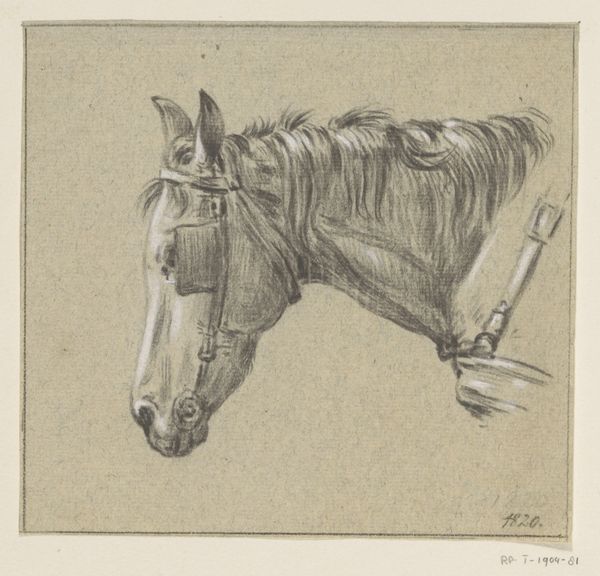
print, etching
#
portrait
#
animal
# print
#
etching
#
romanticism
#
horse
Dimensions: height 58 mm, width 58 mm
Copyright: Rijks Museum: Open Domain
Curator: This print, “Paardenhoofd met halster,” or “Horse Head with Halter,” by Abraham Hendrik Winter, dating roughly from 1815 to 1860, is remarkably evocative, especially given its minimalist etching technique. Editor: It's so detailed despite being just lines. The horse seems both powerful and vulnerable. What’s your interpretation? Curator: Well, I'm interested in how Winter’s process and materials interact. Etching itself is a fairly industrialized printmaking method. How does the choice of this relatively mass-producible technique complicate or inform our understanding of the singular subject of a majestic horse? Was it destined for mass distribution, or consumption in another way? Editor: So you are thinking about the print as commodity as much as art? Curator: Exactly. We often think of "high art" and its uniqueness, but here, Winter utilizes a replicable method to portray an individual animal, perhaps domesticated and used as property itself. That tension—the individual versus the mass, the natural versus the manufactured—is critical. The etching medium allows for detail, sure, but consider the labor involved in creating the plate and then pulling numerous prints. Who was his audience, and what meaning did the accessibility of a printed image lend this otherwise possibly romantic portrayal? Editor: I see, so thinking about materials and the production process reveals another layer to its interpretation. It makes the image less straightforward somehow, more complex. Curator: Precisely! It's a prompt to consider labor and modes of consumption rather than just celebrating this singular horse head. Editor: That is so insightful. I’m walking away seeing so much more. Curator: Good. Approaching the print from a material perspective gives it so much richer value than first meets the eye!
Comments
No comments
Be the first to comment and join the conversation on the ultimate creative platform.
